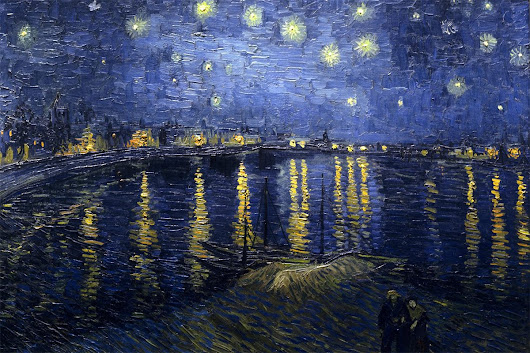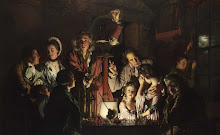Painting and Photography: Different Worlds
Post-Impressionism was a movement that followed Impressionism, characterized by a more expressive and individualistic approach to art. Post-Impressionist artists sought to move beyond Impressionism, using color and form in a more abstract manner. Notable artists from this period include Van Gogh, Cézanne, Seurat, and Toulouse-Lautrec. Post-Impressionism can be identified by its use of bold colors, thick brushstrokes, and a more structured approach to form, with a greater focus on emotion and symbolism.
Photography has actually been around for quite some time, and most people might be amazed to learn that the first photo was taken almost 200 years ago. Given the advances in lenses and optics that began with Galileo's invention of the telescope in 1608, photography could have been invented even earlier. Unlike paintings, photography is a completely different medium and has advanced significantly during the modern era.
Let's get to analyzing!
I'd like to start by discussing a couple of my favorite Post-Impressionist pieces. The first is Starry Night Over the Rhône by Van Gogh. Although I have already covered another of Van Gogh's works in a previous post, his art always brings me joy. This is not the Starry Night most people think of when it comes to his work, but it is easily recognized as a Van Gogh masterpiece. The large, thick brush strokes, vivid and bold colors, and abstract style are hallmarks of Post-Impressionist art, and Van Gogh may be one of the most recognized artists of that era.
This painting was created as part of Van Gogh's series of night paintings. He enjoyed setting up a chair and easel to capture the world as he saw it. In the background, we see numerous gas lamps illuminating the city, a couple of boats in the harbor, and a couple at the bottom of the painting, perhaps enjoying a nightly stroll. Although these details are prominent, Van Gogh wanted to draw our attention to the night sky, with stars shining brightly and lighting up the scene. The blue hues throughout the painting are illuminated by this starlight. The reflections in the water not only showcase the night sky's blue tones but also project the far-reaching light of the gas lamps. A charming detail is the depiction of waves in the water. When I see them, I can almost hear the sound of the waves crashing against the boat in my mind.
View from the Window at Le Gras is the very first photograph ever captured. When Niepce took this image, it wasn't called a photograph but a sun-drawing or "heliography," as he termed it. In today's terms, we would refer to this as a long exposure, as it took 8 hours to capture. Imagine holding a shutter open for that long to get an image!
Photography was more of a science base way of getting an image. Now let's look at how science was able to get a portrait.
This is a portrait of Dorothy Draper taken in 1839. It is notable for being the first photographed portrait of a woman with her eyes open. The exposure time was 65 seconds, meaning it took that long for light to expose the film and capture the image. A contraption called a Daguerreotype holder kept the person in place to prevent movement, ensuring a clear image. Any movement during the exposure would cause the picture to blur, making it difficult to discern the subject. Interestingly, the exposure time wasn't sufficient to properly capture her face, so flour was applied to her face to achieve the correct contrast against her clothing.
Photography has come a long way since its inception. Today, anyone with a smartphone has a camera on hand. There's no need to set up elaborate buildings to trace a shadow on a wall or use long cameras with bellows that display an upside-down image while waiting on long exposures.
Let me show you a couple photos I have taken of taken such as a landscape and portrait in modern times. Crazy to see the difference.
691 (no date) Van Gogh Letters. Available at: https://vangoghletters.org/vg/letters/let691/letter.html (Accessed: 16 July 2024).
The Old Guitarist, 1903 by Pablo Picasso (no date) The old guitarist, 1903 by Pablo Picasso. Available at: https://www.pablopicasso.org/old-guitarist.jsp (Accessed: 16 July 2024).
The Wonderful World of early photography. (2011) Neatorama. Available at: https://www.neatorama.com/2006/08/29/the-wonderful-world-of-early-photography/ (Accessed: 16 July 2024).








Hello Art,
ReplyDeleteI thoroughly enjoyed your blog post, especially your analysis of Van Gogh's "Starry Night". Your insights into Van Gogh's use of bold colors and thick brushstrokes highlight his unique style and the emotional impact of his work. The details about the painting's background, like the gas lamps and reflections in the water, add to the understanding of Van Gogh's technique. Your transition to photography and its development is also well done, showing how both mediums offer unique ways to capture the world. Your passion for photography adds a great personal touch to your analysis.
Hello Art,
ReplyDeleteI also chose to analyze Starry Night Over the Rhone, after reading your analysis I discovered the waves in the ocean. How did I miss something that prominent? I also had no idea the lights were from gas lamps as it does make sense for it was painted in the 1800s. I enjoyed your deep analysis for the first two pieces. At first glance at The Old Guitarist my first thought was “wow this is a depressing canvas” and then I read your analysis and it now made sense to me.
Hello Art,
ReplyDeleteWhat a cool post, Van Gogh and Picasso! I love your choice of Van Gogh's work, "Starry Night Over the Rhône". It took me a minute of looking at it to even notice the people at the bottom. He did a great job keeping the focus on the sky and water.
Picasso did a great job with the blue and making us feel the mood of the painting. I would have to say I prefer your Post-Impressionist pieces over the photography style. I do enjoy photography, but I would have to say the paintings you choose are hard to beat.
I cannot imagine having to sit there that long to get a picture taken! Crazy how far we have come. Your photography looks awesome, you are very talented. Thanks for sharing this post!